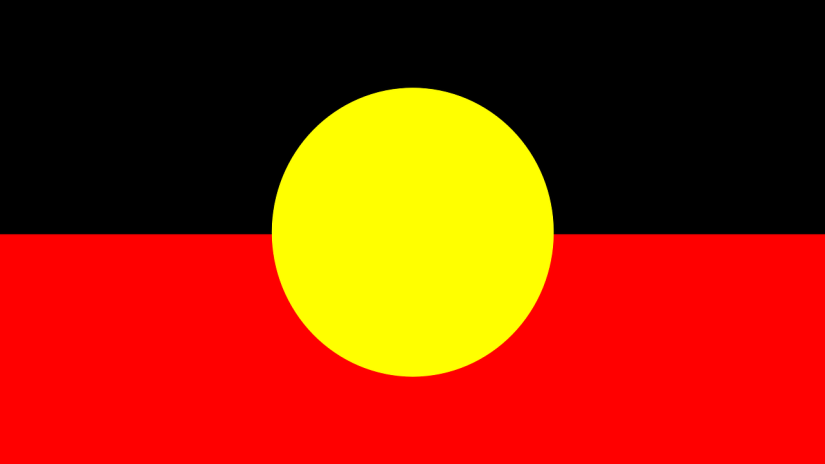Non-Indigenous Australians shouldn’t fear a First Nations Voice to Parliament.

Image: Pixabay
The 2017 Uluru Statement from the Heart is one of the most significant documents on constitutional change in Australian history. The result of extensive consultation and debate, it explains how First Nations want to be included in the constitution.
Despite the enormous moral authority of the statement, its call for a constitutionally enshrined Voice to Parliament was immediately rejected by then-Prime Minister Malcolm Turnbull. His successor, Scott Morrison, is also opposed.
Instead, Morrison has proposed a legislated Voice to Government. In December, his government published a report on how that might work. The Indigenous co-design group who worked on it was not allowed to consider whether the Voice should be put in the Constitution.
Opponents of the Voice to Parliament have used three main arguments. In a technical sense, they have claimed it will make our current Westminster system unworkable. Morally, they argue it is undemocratic and creates privilege for a specific group. And pragmatically, they have said the Voice is “not capable of winning acceptance in a referendum”.
The Uluru Statement concludes by inviting non-Indigenous Australians to “walk with us”. In that spirit, we published a journal article defending the statement against common criticisms and explaining why non-Indigenous Australians should not fear a Voice to Parliament in the Constitution.
A constitutional Voice is workable
The Voice to Parliament was initially rejected by leading Coalition MPs on the basis it distorts Australia’s bicameral system by introducing a “third chamber”. This fear is based on the false assumption the Voice could block legislation or dictate government policy.
The Voice does not include any veto power, but simply allows First Nations to advise the parliament on laws and policy that will affect them. As one of the chief architects of the Uluru Statement, Professor Megan Davis has explained it is focused on ensuring “Aboriginal participation in the democratic life of the state”.
Putting the Voice in the Constitution is not only workable within Australia’s parliamentary system, it is key to its success. Earlier Indigenous advisory bodies created by parliament have been disbanded by parliament. The most notable example is the Aboriginal and Torres Strait Islander Commission, which functioned for 14 years before being abolished in 2004.
Protecting the Voice in the Constitution will also make it more effective. As Davis explains, constitutional entrenchment would improve the likelihood that government actually listens to Indigenous people.
A constitutional Voice means equality, not privilege
A philosophical criticism of the Voice is it violates the democratic principle of “one person, one vote” and allows special treatment for a particular group. In a legal sense, Indigenous Australians enjoy the same rights as others at an individual level. What is frequently denied — and what the Voice addresses — are collective rights.
In our article, we use the term “egalitarian nationhoods” to describe a scenario where both individual and collective rights are respected. A key plank in this theory is acknowledging that Aboriginal and Torres Strait Islander communities are legitimate nations which exercised sovereignty over their lands for thousands of years before British colonisation.
Nationhood is not the same as statehood. It is a psychological bond which can include cultural, linguistic, religious or ethnic identities as well as shared symbols, memories and traditions. Non-Indigenous Australians already enjoy individual rights and collective rights as members of the Australian nation. The Voice would promote equality by allowing First Nations peoples to also enjoy collective rights as members of distinct and legitimate nations.
A constitutional Voice can win a referendum
Carrying a referendum in Australia is difficult as it requires the endorsement of an overall majority of voters and a majority of states. The last successful referendum was in 1977 and no government has even tried to change the Constitution this century.
Despite this, there is evidence a constitutionally enshrined Voice can pass a referendum.
A survey of poll data since 2017 conducted by the Centre for Aboriginal Economic Policy Research suggests 70–75% of voters with a committed position support the Voice. That study also found a referendum on a Voice to Parliament would likely be carried, especially if the Coalition leadership approached it “with a more positive frame than in 2017”.
Public consultation on the co-design process also overwhelmingly supported putting the Voice in the Constitution. Analysis of the more than 2,500 public submissions received by the co-design group reveals 90% wanted the Voice to be constitutionally enshrined.
The most successful referendum in Australian history removed constitutional discrimination against First Nations in 1967. It was carried with over 90% support. Similarly, there is wide public support and good will for the Voice to Parliament in both Indigenous and non-Indigenous communities. This is the key ingredient for a successful referendum.
Why this matters
It has been over 14 years since then-Prime Minister John Howard promised Indigenous recognition in the Constitution and almost five years since First Nations explained what they want that to look like in the Uluru Statement.
Since then, understanding and awareness about the Voice to Parliament has grown. A Voice to Parliament is workable, will promote equality, and can win a referendum.
It is time for the government to put the question to the people.![]()
Harry Hobbs, Senior lecturer, University of Technology Sydney and Benjamin T. Jones, Senior Lecturer in History, CQUniversity Australia
This article is republished from The Conversation under a Creative Commons license. Read the original article.

